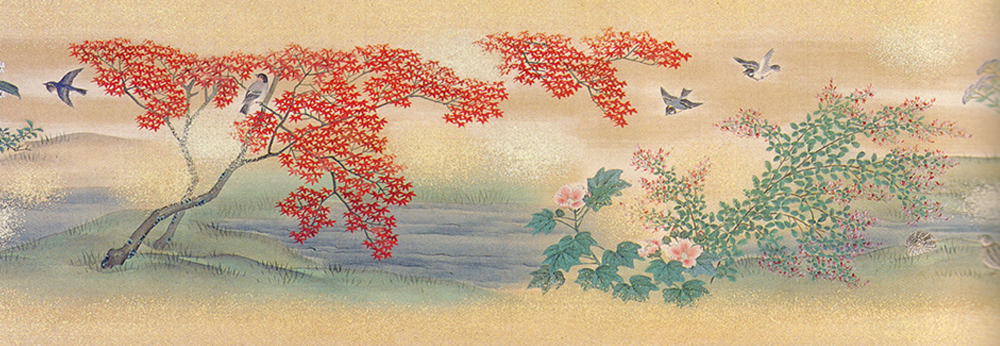三月おひな祭り
3月1日(土)午前11時より、宝鏡寺本堂にて開催いたしました。
本年は白拍子が舞(正式には数ふ)を奉納。
 Letter boxes with flower-bird patterns decorated with maki-e lacquer and raden mother-of-pearl inlay (associated with Princess Kazunomiya)
Letter boxes with flower-bird patterns decorated with maki-e lacquer and raden mother-of-pearl inlay (associated with Princess Kazunomiya)
Princess Kazunomiya, a daughter of Emperor Ninko, was married to the Shogun Iemochi Tokugawa as part of the official reconciliation of the Imperial Court and the Shogunate. During the period of the Meiji restoration, Princess Kazunomiya contributed greatly to the peaceful surrender of Edo Castle to avoid civil war in Edo (present-day Tokyo).
When she visited Hokyo-ji in her childhood, she often enjoyed playing in the Garden of the Crane and Tortoise, and engaged in such games as sugoroku (Japanese board game played with dice) and kai-awase (a game of pairing clamshells) with high-ranking young female attendants.
When Sanehisa Hashimoto, her grandfather on her mother’s side, passed away, she stayed at Hokyoji, frequently chanting Buddhist sutras with her female attendants
Because of this, many articles from the Imperial Palace associated with Princess Kazunomiya, including picture scrolls, were bestowed upon Hokyo-ji.
 *”Picture scroll of seasonal flowers and birds (autumn scenery)” by Oryu Maruyama (associated with Princess Kazunomiya)
*”Picture scroll of seasonal flowers and birds (autumn scenery)” by Oryu Maruyama (associated with Princess Kazunomiya)
 *Uchishiki Buddhist altar textile with vertically swirling clouds and flower-bird patterns (associated with Princess Kazunomiya)
*Uchishiki Buddhist altar textile with vertically swirling clouds and flower-bird patterns (associated with Princess Kazunomiya)
Tomiko Hino (1440-1496), a daughter of the influential court noble, Shigemasa Hino, was the legal wife of Yoshimasa Ashikaga, the 8th Shogun of the Muromachi Shogunate. The political strife concerning the succession to the Shogun’s post which occurred between her biological son, Yoshihisa, and her brother-in-law contributed to the outbreak of the Onin Civil War, a war that continued for 11 years, ravaging much of the city of Kyoto.
Later, Tomiko took the tonsure and became a Buddhist nun called Myozen-in. She entered Daiji-in, a Pure Land sect convent, which was founded by her relative, Sukenmon-in, who was the mother of Emperor Goenyu. Daiji-in used to be located adjacent to Hokyo-ji until the beginning of the Meiji Period, but was eventually absorbed by Hokyo-ji. Because of this, a wooden statue of Tomiko Hino is enshrined at Amida-do (Amitabha Hall) of Hokyo-ji. Furthermore, Keizan-zenni, the 15th abbess of Hokyo-ji was a biological daughter of Tomiko Hino and the 8th Shogun Yoshimasa Ashikaga.